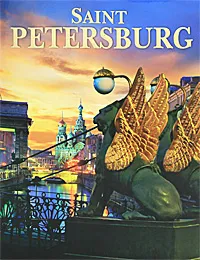Saint Petersburg
📖 St Petersburg is the youngest among well-known European cities - its tercentenary was celebrated in 2003. For more than two hundred years it was the brilliant capital of the immense Russian Empire pushing the old patriarchal Moscow into the background. Having lost the official status of the capital in 1918, it has still remained the country's cultural and spiritual centre. It was in St Petersburg that the new type of Russian man was being formed, the greatest triumphs were celebrated and the events that influenced the destiny of Russia and the world as a whole took place. Not a single Russian city caused such admiration and was an object of such damnation as St Petersburg; there is no other city in Russia with which the brightest hopes and the darkest prophecies were associated.
St Petersburg is unique indeed. Created by the powerful will of Peter the Great as "a window on to Europe", it reminded by its sudden emergence to European countries about the forgotten Russia that had been withdrawn, in their opinion, to the boundary of the Christian world. The Tsar founded the city "to curb the haughty neighbour", to ensure for Russia an outlet to the Baltic Sea and "to gain a foothold upon the coast". It was here, in the new capital that Peter the Great overcame the country's centuries-long isolation, strengthened its influence and proclaimed Russia as an Empire becoming its first Emperor. Peter, preoccupied with grandiose imperial plans, was inspired by the image of "eternal" Rome, so imperial symbols and parallels were highly important for him. Therefore the name of the Holy City of St Peter given to the new capital was associated not only with the heavenly patron of the Russian Tsar, but also with the idea of St Petersburg as the new Rome. It was not a mere coincidence that the coat of arms of the city on the Neva River is somewhat similar to that of the Vatican - crossed anchors correspond to the crossed keys of the Catholic state. The arms suggested, as it were, a link between Emperor Peter, who took a decision to open the doors of his "paradise" to Europe, with the Apostle Peter, who possessed keys from Paradise. And the anchor in the coat of arms was regarded as a symbol of the spiritual salvation and faith, implying at the same time the young Russian fleet.
St Petersburg is unique indeed. Created by the powerful will of Peter the Great as "a window on to Europe", it reminded by its sudden emergence to European countries about the forgotten Russia that had been withdrawn, in their opinion, to the boundary of the Christian world. The Tsar founded the city "to curb the haughty neighbour", to ensure for Russia an outlet to the Baltic Sea and "to gain a foothold upon the coast". It was here, in the new capital that Peter the Great overcame the country's centuries-long isolation, strengthened its influence and proclaimed Russia as an Empire becoming its first Emperor. Peter, preoccupied with grandiose imperial plans, was inspired by the image of "eternal" Rome, so imperial symbols and parallels were highly important for him. Therefore the name of the Holy City of St Peter given to the new capital was associated not only with the heavenly patron of the Russian Tsar, but also with the idea of St Petersburg as the new Rome. It was not a mere coincidence that the coat of arms of the city on the Neva River is somewhat similar to that of the Vatican - crossed anchors correspond to the crossed keys of the Catholic state. The arms suggested, as it were, a link between Emperor Peter, who took a decision to open the doors of his "paradise" to Europe, with the Apostle Peter, who possessed keys from Paradise. And the anchor in the coat of arms was regarded as a symbol of the spiritual salvation and faith, implying at the same time the young Russian fleet.
Мнения
